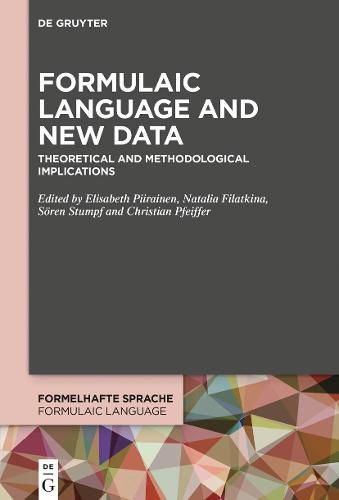Readings Newsletter
Become a Readings Member to make your shopping experience even easier.
Sign in or sign up for free!
You’re not far away from qualifying for FREE standard shipping within Australia
You’ve qualified for FREE standard shipping within Australia
The cart is loading…






This title is printed to order. This book may have been self-published. If so, we cannot guarantee the quality of the content. In the main most books will have gone through the editing process however some may not. We therefore suggest that you be aware of this before ordering this book. If in doubt check either the author or publisher’s details as we are unable to accept any returns unless they are faulty. Please contact us if you have any questions.
The existence of formulaic patterns has been attested to all languages of the world. However, systematic research in this field has been focused on only a few European standard languages with a rich literary tradition and a high degree of written norm. It was on the basis of these data that the theoretical framework and methodological approaches were developed. The volume shifts this focus by centering the investigation on new data, including data from lesser-used languages and dialects, extra-european languages, linguistic varieties mostly used in spoken domains as well as at previous historical stages of language development. Their inclusion challenges the existing postulates at both a theoretical and methodological level. Areas of interest include the following questions: What is formulaic in these types of languages, varieties and dialects? Are the criteria developed within the framework of phraseological research applicable to new data? Can any specific types of formulaic patterns and/or any specific features of regular (already known) types of formulaic patterns be observed and how do they emerge? What methodological difficulties need to be overcome when dealing with new data?
$9.00 standard shipping within Australia
FREE standard shipping within Australia for orders over $100.00
Express & International shipping calculated at checkout
This title is printed to order. This book may have been self-published. If so, we cannot guarantee the quality of the content. In the main most books will have gone through the editing process however some may not. We therefore suggest that you be aware of this before ordering this book. If in doubt check either the author or publisher’s details as we are unable to accept any returns unless they are faulty. Please contact us if you have any questions.
The existence of formulaic patterns has been attested to all languages of the world. However, systematic research in this field has been focused on only a few European standard languages with a rich literary tradition and a high degree of written norm. It was on the basis of these data that the theoretical framework and methodological approaches were developed. The volume shifts this focus by centering the investigation on new data, including data from lesser-used languages and dialects, extra-european languages, linguistic varieties mostly used in spoken domains as well as at previous historical stages of language development. Their inclusion challenges the existing postulates at both a theoretical and methodological level. Areas of interest include the following questions: What is formulaic in these types of languages, varieties and dialects? Are the criteria developed within the framework of phraseological research applicable to new data? Can any specific types of formulaic patterns and/or any specific features of regular (already known) types of formulaic patterns be observed and how do they emerge? What methodological difficulties need to be overcome when dealing with new data?